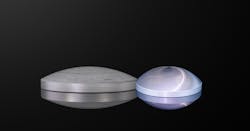Germanium lenses are a type of optical lenses that are crafted from polished germanium material. These lenses possess exceptional durability and resistance to corrosion, making them highly suitable for usage in challenging environments where harsh conditions prevail and constant exposure to the elements is expected.
Avantier, a reputable manufacturer, offers a diverse range of germanium lenses in various sizes and types. These lens options include spherical lenses, plano-concave lenses, p-convex lenses, concave-convex lenses, and aspheric lenses. Additionally, Avantier also provides the option for customized orders, allowing customers to specify their desired size, shape, and anti-reflection coating requirements.
Germanium lenses boast a remarkably high refractive index, surpassing that of other readily available infrared (IR) transmitters. Consequently, they exhibit minimal chromatic aberration owing to their low dispersion characteristics. These properties render germanium lenses exceptionally well-suited for utilization in infrared field applications such as forward-looking infrared (FLIR) and Fourier transform infrared (FTIR) systems. Moreover, they find applications in thermal imaging systems and precision analytic instruments that operate in challenging and demanding environments.
The outstanding ruggedness of germanium lenses can be attributed to the exceptional hardness of the germanium material itself, with a Knoop hardness rating of 780. Additionally, germanium possesses a high density, measured at 5.33 g/cm3, which necessitates considerations of weight when designing systems that are sensitive to weight parameters.
It is important to note that germanium is prone to a phenomenon known as thermal runaway. This means that as the temperature increases, the transmission capability of the lens diminishes, ultimately leading to opacity. Consequently, it is recommended to employ germanium lenses only in environments where temperatures remain below 100°C.
Germanium demonstrates optimal transmission efficiency, exceeding 45%, within the wavelength range of 2-12 μm, which makes it particularly advantageous for the manipulation of mid-infrared light. Furthermore, by applying anti-reflective coatings, the transmission efficiency can be further enhanced to reach approximately 95%.
